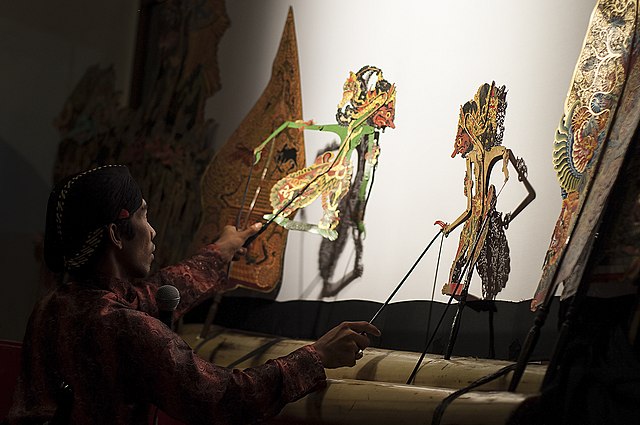Wayang kulit is a traditional form of shadow puppetry originally found in the cultures of Java and Bali in Indonesia. In a wayang kulit performance, the puppet figures are rear-projected on a taut linen screen with a coconut oil light. The dalang manipulates carved leather figures between the lamp and the screen to bring the shadows to life. The narratives of wayang kulit often have to do with the major theme of good vs. evil.
Wayang kulit performance with Dalang
The Wayang Kulit performance by the Indonesian notable "dalang" (puppet master) Manteb Soedharsono, with the story "Gathutkaca Winisuda", in Bentara Budaya Jakarta, Indonesia, on 31 July 2010
A wayang kulit performance accompanied by a gamelan orchestra, between 1862 and 1872
Blencong, a Javanese oil lamp in the form of the mythical Garuda bird for wayang kulit performances, before 1924
Shadow play, also known as shadow puppetry, is an ancient form of storytelling and entertainment which uses flat articulated cut-out figures which are held between a source of light and a translucent screen or scrim. The cut-out shapes of the puppets sometimes include translucent color or other types of detailing. Various effects can be achieved by moving both the puppets and the light source. A talented puppeteer can make the figures appear to walk, dance, fight, nod and laugh.
A performance of wayang, an Indonesian shadow puppet form
Cambodian shadow puppet depicting Sita
This Chinese shadow puppet is illustrative of the ornate detail that goes into the figures. From the collection of The Children's Museum of Indianapolis.
Chinese shadow puppetry is a form of theater whereby colorful silhouette figures perform traditional plays against a back-lit cloth screen, accompanied by music.From Kaifeng Prefecture.








